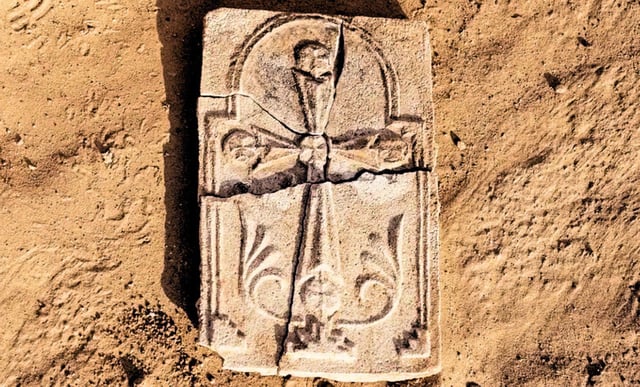Overview
- The plaster cross, about 30 centimeters long, was found embedded in a courtyard wall of one of nine small houses first excavated in 1992 on Sir Bani Yas Island.
- Officials and project archaeologists confirm the artifact definitively connects the domestic cluster to a Christian monastic community adjacent to a 7th–8th-century church and monastery.
- Design details—including a stepped base and vegetal motifs—are interpreted as stylistic ties to Eastern, or Nestorian, Christian traditions rooted in Mesopotamia.
- Alongside the cross, archaeologists recovered pottery shards, glass vessels, and a bottle, with further excavations and laboratory dating planned to refine the site’s chronology and function.
- Researchers estimate up to 40 monks may have lived there for more than a century, the church-and-monastery site remains open to visitors, and parallel finds across the Gulf, including a 4th-century site in Bahrain, point to a wider pre-Islamic Christian network.
